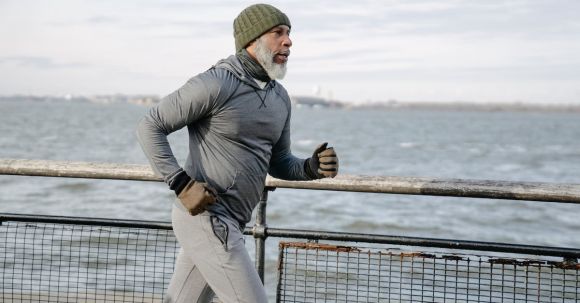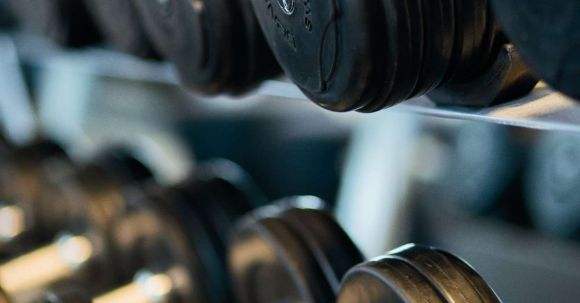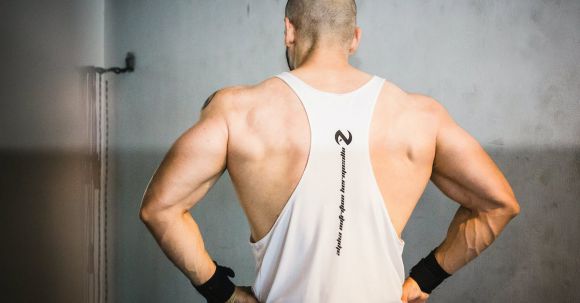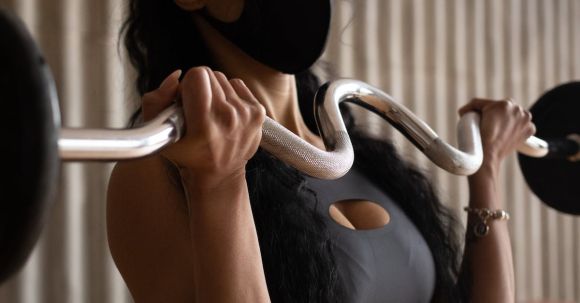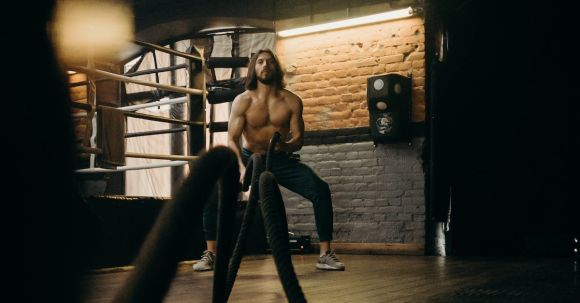Living with joint pain or arthritis can make it challenging to engage in physical activities. However, it is crucial to remember that regular exercise is essential for maintaining cardiovascular health. Fortunately, there are several low-impact cardiovascular exercises that can be beneficial for individuals with joint pain or arthritis. In this article, we will explore some of these exercises and discuss their benefits.
Author: fit-on
Setting fitness goals is the first step towards a healthier lifestyle, but staying accountable to those goals can be challenging. With the advent of online coaching, however, there are now more options than ever to help you stay on track. In this article, we will explore how online coaching can provide the accountability and support you need to achieve your fitness goals.
The Power of Accountability
Accountability is essential when it comes to achieving any goal, including fitness goals. When you are accountable to someone else, you are more likely to stay committed and motivated. Online coaching provides a unique opportunity to have a dedicated coach who will hold you accountable and help you stay on track.Setting Clear Goals
One of the first steps in staying accountable to your fitness goals is to set clear and specific goals. Online coaching platforms often provide tools and resources to help you define your goals and create a plan to achieve them. By setting clear goals, you can track your progress and measure your success along the way.Creating a Personalized Plan
Online coaching allows you to work with a coach to create a personalized fitness plan that suits your needs and preferences. This personalized approach ensures that you are more likely to stick to your plan and stay accountable. Whether it's a workout routine, a nutrition plan, or a combination of both, having a plan tailored to your specific goals will increase your chances of success.Regular Check-Ins and Progress Tracking
One of the main advantages of online coaching is the ability to have regular check-ins with your coach. These check-ins can be done through video calls, messaging, or even through an app. Regular communication with your coach allows you to discuss your progress, address any challenges or concerns, and make necessary adjustments to your plan. In addition, online coaching platforms often include progress tracking features. This allows you to track your workouts, nutrition, and other relevant data in one place. By seeing your progress in real-time, you can stay motivated and accountable to your goals.Access to a Supportive Community
Another benefit of online coaching is the access to a supportive community of like-minded individuals. Many coaching platforms have forums, chat groups, or social media communities where you can connect with others who are also working towards their fitness goals. This sense of community can provide additional motivation, support, and accountability.Overcoming Obstacles and Challenges
Staying accountable to your fitness goals can be challenging, especially when faced with obstacles or setbacks. Online coaching provides you with a coach who can help you overcome these challenges and keep you on track. Whether it's a lack of motivation, a busy schedule, or a plateau in progress, your coach can provide guidance, advice, and encouragement to help you push through.Commitment and Consistency
Ultimately, staying accountable to your fitness goals with online coaching requires commitment and consistency. While your coach can provide support and guidance, it is up to you to follow through with the plan and make the necessary lifestyle changes. By staying committed and consistent, you will increase your chances of achieving your fitness goals and maintaining a healthier lifestyle in the long run. In conclusion, online coaching can be a valuable tool in staying accountable to your fitness goals. By providing personalized plans, regular check-ins, progress tracking, access to a supportive community, and guidance in overcoming obstacles, online coaching can help you stay motivated, focused, and on track towards achieving your fitness goals. So if you're looking for an extra boost of accountability and support, consider giving online coaching a try.
When it comes to achieving a lean and toned body, cardio exercises are a must. Not only do they help burn calories, but they also increase your heart rate and improve cardiovascular health. In this article, we will explore some of the best cardio exercises that can help you achieve your fitness goals.
1. Running
Running is a classic cardio exercise that requires no equipment and can be done anywhere. It is a great way to burn calories and improve endurance. Whether you prefer jogging on a treadmill or running outdoors, this high-impact exercise is guaranteed to get your heart rate up and help you shed those extra pounds.2. Jumping Rope
Jumping rope is a fun and effective cardio exercise that can be done in the comfort of your own home. Not only does it burn calories, but it also improves coordination and strengthens the legs and core muscles. Start with a few minutes of jumping rope and gradually increase the duration as you build stamina.3. Cycling
Cycling is a low-impact cardio exercise that is gentle on the joints while still providing a great workout. Whether you prefer riding a stationary bike or going for a bike ride outdoors, this exercise targets the leg muscles and helps improve cardiovascular fitness. It is also a great way to explore the outdoors and enjoy some fresh air.4. Swimming
Swimming is a full-body workout that engages all major muscle groups. It is a low-impact exercise that is gentle on the joints, making it suitable for people of all fitness levels. Whether you swim laps or participate in a water aerobics class, swimming is an excellent way to tone your entire body while improving cardiovascular endurance.5. High-Intensity Interval Training (HIIT)
HIIT workouts involve short bursts of intense exercise followed by periods of rest or lower-intensity exercise. This type of training is known to be highly effective for burning calories and increasing metabolism. It can be done using various exercises such as burpees, mountain climbers, and jumping jacks. Incorporating HIIT into your routine can help you achieve a lean and toned body in a shorter amount of time.6. Dancing
Dancing is not only a fun and enjoyable activity but also a great cardio exercise. Whether you join a dance class or simply dance around in your living room, this activity gets your heart rate up and helps burn calories. From Zumba to hip-hop, there are many dance styles to choose from, making it easy to find something that suits your taste.7. Stair Climbing
Stair climbing is a simple yet effective cardio exercise that can be done almost anywhere. Whether you use a stair climber machine at the gym or climb the stairs in your office building, this exercise targets the lower body muscles and helps improve cardiovascular fitness. It also burns a significant amount of calories and can be easily incorporated into your daily routine. In conclusion, cardio exercises are essential for achieving a lean and toned body. From running and jumping rope to cycling and swimming, there are numerous options to choose from. Incorporate these exercises into your fitness routine and watch as your body becomes stronger, leaner, and more toned. Remember to start slowly and gradually increase the intensity to avoid injury. Stay consistent and enjoy the journey towards a healthier and fitter you.
Engaging in regular exercise is essential for maintaining overall health and fitness. However, it is not uncommon to experience muscle soreness after a workout, which can be uncomfortable and hinder your ability to perform daily activities. Fortunately, there are several strategies you can implement to reduce post-workout muscle soreness and promote faster recovery. In this article, we will explore some effective tips to help you alleviate muscle soreness and get back to your fitness routine feeling refreshed.
1. Warm-up and cool-down properly
One of the most crucial steps in preventing post-workout muscle soreness is to properly warm up and cool down before and after your exercise session. A dynamic warm-up, such as light jogging or gentle stretching, helps prepare your muscles for the upcoming activity, increasing blood flow and flexibility. Similarly, a cool-down routine that includes static stretching can help relax your muscles and prevent the buildup of lactic acid, which contributes to muscle soreness.2. Hydrate adequately
Staying hydrated before, during, and after your workout is essential for preventing muscle soreness. Proper hydration helps flush out toxins and waste products that accumulate during exercise, reducing the risk of inflammation and soreness. Make sure to drink water before, during, and after your workout to maintain optimal hydration levels. If you engage in intense or prolonged exercise, consider incorporating electrolyte-rich beverages to replenish essential minerals lost through sweat.3. Gradually increase workout intensity
When it comes to exercise, it is important to gradually increase the intensity of your workouts to prevent excessive muscle soreness. Sudden spikes in training volume or intensity can overwhelm your muscles, leading to increased soreness and potential injury. Instead, aim to progressively challenge your body by gradually increasing the duration, frequency, or intensity of your workouts. This allows your muscles to adapt and recover more effectively, minimizing post-workout soreness.4. Incorporate rest and recovery days
Taking regular rest and recovery days is essential for reducing muscle soreness and achieving optimal performance. When you exercise, your muscles undergo microscopic damage, which is repaired during rest periods. Adequate rest allows your muscles to rebuild and become stronger, reducing the risk of excessive soreness. Make sure to include rest days in your training schedule and prioritize sleep to promote optimal recovery.5. Use foam rolling and self-massage techniques
Foam rolling and self-massage techniques are effective in relieving muscle soreness and promoting faster recovery. Foam rolling involves using a foam roller to apply pressure to specific areas of your body, targeting tight muscles and knots. This technique helps release tension, improve circulation, and reduce muscle soreness. Additionally, using massage tools like lacrosse balls or massage sticks can help alleviate muscle soreness by targeting specific trigger points.6. Consider active recovery exercises
Engaging in active recovery exercises on your rest days can help reduce post-workout muscle soreness. Active recovery refers to low-intensity exercises that promote blood flow and enhance muscle recovery without causing additional stress. Examples of active recovery exercises include gentle yoga, swimming, or light cycling. These activities help flush out metabolic waste products, reduce inflammation, and accelerate the healing process. By implementing these tips into your fitness routine, you can effectively reduce post-workout muscle soreness and enhance your overall recovery. Remember to listen to your body, adjust your workouts accordingly, and prioritize rest and recovery. With consistency and proper care, you can minimize muscle soreness, allowing you to enjoy the benefits of regular exercise without unnecessary discomfort.
When it comes to losing weight, most people tend to focus on cardiovascular exercises like running or cycling. However, strength training is often overlooked as an effective tool for weight loss. Many people believe that lifting weights will make them bulk up, but this is a common misconception. In fact, strength training can be a powerful way to burn fat and achieve your weight loss goals. Let's explore how strength training can help you shed those unwanted pounds.
Building Lean Muscle Mass
One of the main benefits of strength training is its ability to help you build lean muscle mass. Unlike cardio exercises, which primarily burn calories during the activity, strength training continues to burn calories even after your workout is over. This is because lean muscle mass requires more energy to maintain than fat tissue. By increasing your muscle mass through strength training, you can boost your metabolism and burn more calories throughout the day.Burning Calories
Strength training is a fantastic way to burn calories. During a weightlifting session, your body works hard to move the weights, which requires a significant amount of energy. This energy expenditure leads to an increased calorie burn. Additionally, strength training can help you maintain a calorie deficit, which is essential for weight loss. By burning more calories than you consume, your body will begin to tap into its fat stores for energy, resulting in fat loss.Increasing Resting Metabolic Rate
Your resting metabolic rate (RMR) refers to the number of calories your body burns at rest. By increasing your muscle mass through strength training, you can raise your RMR. This means that even when you're not working out, your body will be burning more calories than before. In fact, studies have shown that strength training can increase your RMR by up to 7% over time. This boost in metabolism can be a game-changer when it comes to weight loss.Improving Insulin Sensitivity
Strength training can also have a positive impact on your insulin sensitivity. Insulin is a hormone that regulates blood sugar levels, and individuals with poor insulin sensitivity are more likely to store excess fat. By engaging in regular strength training, you can improve your body's ability to use insulin effectively. This can lead to more stable blood sugar levels and a reduced risk of weight gain.Enhancing Overall Body Composition
Weight loss is not just about shedding pounds; it's also about improving your body composition. Strength training can help you achieve this by increasing your muscle mass while reducing your body fat percentage. This can result in a more toned and defined physique. Moreover, strength training can prevent the loss of muscle mass that often occurs with traditional dieting. By preserving your muscle mass, you can ensure that the weight you lose comes from fat rather than muscle.Incorporating Strength Training into Your Routine
To reap the benefits of strength training for weight loss, it's important to incorporate it into your fitness routine. Aim for at least two to three strength training sessions per week, focusing on all major muscle groups. Start with lighter weights and gradually increase the resistance as you become stronger. Remember, consistency is key. Stick to your strength training routine, and you'll start seeing results in no time. In conclusion, strength training is a powerful tool for weight loss. By building lean muscle mass, burning calories, increasing your resting metabolic rate, improving insulin sensitivity, and enhancing overall body composition, strength training can help you achieve your weight loss goals. So, don't underestimate the power of lifting weights. Add strength training to your fitness routine, and watch the pounds melt away.
In today's fast-paced world, finding time to hit the gym and exercise can be a challenge. However, you don't need fancy equipment or a gym membership to burn fat and build muscle. With the right approach and dedication, you can achieve your fitness goals right from the comfort of your own home. In this article, we will explore effective strategies and exercises that will help you burn fat and build muscle without stepping foot outside.
Create a Workout Routine
To effectively burn fat and build muscle at home, it's essential to create a structured workout routine. This routine should include a combination of cardiovascular exercises and strength training. Cardio exercises, such as jumping jacks, high knees, or jogging in place, help increase your heart rate and burn calories. Strength training exercises, on the other hand, help build muscle and increase your metabolism.Bodyweight Exercises
Bodyweight exercises are an excellent way to build muscle without the need for equipment. These exercises use your own body weight as resistance, targeting multiple muscle groups simultaneously. Some effective bodyweight exercises include push-ups, squats, lunges, planks, and burpees. These exercises can be modified to match your fitness level and gradually increased as you progress.HIIT Workouts
High-Intensity Interval Training (HIIT) is a popular and effective workout method that combines short bursts of intense exercise with periods of rest or low-intensity exercise. HIIT workouts are known to be time-efficient and burn fat effectively. You can incorporate various exercises like jumping jacks, mountain climbers, or squat jumps into your HIIT routine. Aim for 20-30 seconds of intense exercise followed by 10-15 seconds of rest. Repeat this cycle for 10-20 minutes, depending on your fitness level.Resistance Bands
Resistance bands are affordable and versatile tools that can help you build muscle and increase strength at home. These bands provide resistance throughout the entire range of motion, making your muscles work harder. You can use resistance bands for various exercises such as bicep curls, tricep extensions, lateral raises, and glute bridges. Incorporating resistance bands into your workout routine can help target specific muscle groups and add variety to your exercises.Proper Nutrition
Exercise alone is not enough to burn fat and build muscle. Proper nutrition plays a crucial role in achieving your fitness goals. Focus on consuming a balanced diet that includes lean protein, whole grains, fruits, and vegetables. Protein is essential for muscle repair and growth, so make sure to include sources like chicken, fish, tofu, or legumes in your meals. Stay hydrated by drinking enough water throughout the day, and limit your intake of processed foods, sugar, and unhealthy fats.Rest and Recovery
While it's important to stay consistent with your workouts, rest and recovery are equally crucial for achieving optimal results. Your muscles need time to repair and rebuild after intense exercises. Aim for 7-8 hours of quality sleep each night to allow your body to recover. Additionally, incorporate active recovery activities like stretching or yoga into your routine to prevent muscle soreness and improve flexibility.Stay Motivated
Staying motivated is key to achieving your fitness goals. Set realistic and achievable targets, and track your progress along the way. Find a workout buddy or join online fitness communities for support and accountability. Celebrate small victories and remember that building muscle and burning fat takes time and dedication. In conclusion, burning fat and building muscle at home is entirely possible with the right mindset and approach. Create a structured workout routine that combines cardiovascular exercises, strength training, and HIIT workouts. Incorporate bodyweight exercises and resistance bands to target specific muscle groups. Focus on proper nutrition, rest, and recovery to support your fitness journey. Stay motivated, be consistent, and watch as your body transforms right in the comfort of your own home.
Are you tired of battling with your weight? Do you want to shed those extra pounds and feel confident in your own skin? Look no further than Fit on, the ultimate fitness program designed to help you beat the battle of the bulge. With its personalized approach and effective strategies, Fit on is your key to achieving your weight loss goals and maintaining a healthy lifestyle. Say goodbye to crash diets and hello to lasting results with Fit on.
The Power of Personalization
One of the key advantages of Fit on is its personalized approach to fitness. Unlike generic programs that offer a one-size-fits-all solution, Fit on takes into account your individual needs, preferences, and goals. By tailoring the program to your specific requirements, Fit on ensures that you stay motivated and engaged throughout your weight loss journey. Whether you prefer high-intensity workouts or low-impact exercises, Fit on has got you covered.Variety is the Spice of Life
With Fit on, you'll never get bored of your workout routine. The program offers a wide range of exercises and activities to keep you challenged and excited. From cardio workouts and strength training to yoga and Pilates, Fit on offers a diverse selection of exercises that target different muscle groups and keep your body guessing. By constantly switching up your routine, Fit on ensures that your body continues to burn calories and build strength.Fuel Your Body Right
Achieving sustainable weight loss is not just about exercise – it's also about nourishing your body with the right foods. Fit on provides you with a comprehensive nutrition plan that emphasizes whole, nutrient-dense foods. Say goodbye to processed junk and hello to fresh fruits, vegetables, lean proteins, and healthy fats. With Fit on, you'll learn how to make smart food choices that support your weight loss goals and keep you feeling energized.Accountability and Support
One of the biggest challenges when it comes to weight loss is staying accountable and motivated. Fit on understands this and provides you with the support you need to stay on track. The program offers regular check-ins and progress tracking, helping you stay accountable to your goals. Additionally, Fit on has a strong online community where you can connect with like-minded individuals, share your successes and challenges, and find the support and encouragement you need to keep going.Long-Term Results
Unlike crash diets that offer short-term results, Fit on is designed for long-term success. The program focuses on sustainable lifestyle changes that help you not only lose weight but also maintain a healthy weight in the long run. By adopting healthy habits and making fitness a part of your daily routine, you'll be able to keep the battle of the bulge at bay for good.Conclusion: Your Journey to a Healthier You Starts Now
If you're ready to finally beat the battle of the bulge, it's time to give Fit on a try. With its personalized approach, variety of exercises, emphasis on proper nutrition, and strong support system, Fit on is your ticket to long-term weight loss success. Say goodbye to fad diets and hello to a healthier, happier you. Start your Fit on journey today and see the difference it can make in your life.
Are you ready to rock your best body this summer? It's time to join the Fit on Summer Slim-down Challenge and get shredded! This challenge is designed to help you shed those extra pounds, tone your muscles, and boost your confidence. Say goodbye to that winter fluff and hello to a leaner, stronger you.
Kickstart Your Fitness Journey
The Fit on Summer Slim-down Challenge is the perfect way to kickstart your fitness journey. Whether you're a beginner or a seasoned gym-goer, this challenge is suitable for all fitness levels. With a combination of high-intensity workouts, clean eating, and expert guidance, you'll be on your way to achieving your fitness goals in no time.Rev Up Your Metabolism
One of the key benefits of the Fit on Summer Slim-down Challenge is its ability to rev up your metabolism. High-intensity workouts, such as HIIT (High-Intensity Interval Training), have been shown to increase your metabolic rate, allowing you to burn more calories throughout the day. This means you'll be torching fat and building lean muscle, even while you're resting.Sculpt and Tone Your Body
If you're looking to sculpt and tone your body, the Fit on Summer Slim-down Challenge has got you covered. With a combination of resistance training exercises and targeted workouts, you'll be able to shape your muscles and create a more defined physique. From burpees to squats, push-ups to lunges, you'll be working every major muscle group to achieve that toned and sculpted look.Boost Your Confidence
There's nothing quite like the feeling of confidence that comes from being fit and healthy. The Fit on Summer Slim-down Challenge is not just about physical transformation; it's also about boosting your confidence and self-esteem. As you start to see progress in your body and feel stronger and more energized, your confidence will soar. You'll walk taller, stand prouder, and radiate a newfound sense of self-assurance.Join a Supportive Community
Embarking on a fitness journey can sometimes feel overwhelming, but with the Fit on Summer Slim-down Challenge, you'll never feel alone. By joining this challenge, you'll become part of a supportive community of like-minded individuals who are all working towards the same goal. You'll have access to a private online group where you can share your progress, ask questions, and receive support and encouragement from your fellow challengers.Stay Accountable with Expert Guidance
To ensure you stay on track and reach your goals, the Fit on Summer Slim-down Challenge provides expert guidance every step of the way. From workout plans to meal ideas, you'll have access to a wealth of resources that will help you make the most of this challenge. Our team of fitness professionals will be there to answer your questions, provide tips and advice, and keep you accountable to your goals.Renew Your Commitment to a Healthy Lifestyle
The Fit on Summer Slim-down Challenge is not just a temporary fix; it's a lifestyle change. By participating in this challenge, you'll be renewing your commitment to a healthy and active lifestyle. You'll learn the importance of nourishing your body with nutritious foods, staying consistent with your workouts, and taking care of your overall well-being. This challenge will set you up for long-term success and help you maintain a fit and healthy lifestyle beyond the summer months.Conclusion: Take the First Step Towards Your Best Body
Don't let another summer pass you by without feeling your best. Join the Fit on Summer Slim-down Challenge and take the first step towards achieving your dream body. With a combination of intense workouts, clean eating, and a supportive community, you'll be well on your way to getting shredded and feeling amazing. Are you ready to accept the challenge? Sign up today and start your journey towards a fitter, stronger, and more confident you.
Every athlete wants to reach their full potential, to unlock their athletic power. Whether you are a professional athlete or just starting out, sports-specific training is the key to enhancing your performance. This type of training focuses on the specific skills and movements required for your chosen sport, helping you to maximize your athletic abilities. In this article, we will explore the benefits of sports-specific training and provide some tips on how to incorporate it into your fitness routine.
Understanding Sports-specific Training
Sports-specific training is a targeted approach to fitness that is tailored to the demands of a particular sport. It involves exercises and drills that mimic the movements and skills required for that sport. By training in a way that directly relates to your sport, you can improve your strength, speed, agility, and overall performance.Benefits of Sports-specific Training
1. Improved Performance: By focusing on the specific movements and skills needed for your sport, you can develop the strength, speed, and agility required to excel. This targeted training can help you to perform at your best during competitions and enhance your overall athletic performance. 2. Injury Prevention: Sports-specific training helps to strengthen the muscles and joints used in your sport, reducing the risk of injury. By training in a way that mimics the movements of your sport, you can improve your balance, stability, and coordination, which are essential for injury prevention. 3. Increased Efficiency: When you train specifically for your sport, you become more efficient in your movements. This efficiency allows you to use less energy while performing at a higher level. By improving your technique and movement patterns, you can conserve energy and perform better for longer periods.Tips for Incorporating Sports-specific Training
1. Identify the Key Movements: Start by analyzing the key movements and skills required for your sport. Break them down into specific components and identify the muscles and joints involved. This will help you design exercises and drills that target these areas. 2. Focus on Strength and Power: Sports-specific training should include exercises that focus on developing strength and power. Incorporate exercises that mimic the movements of your sport, such as lunges, squats, and plyometrics. These exercises will help you build the explosive power needed for quick movements and bursts of speed. 3. Work on Agility and Speed: Agility and speed are crucial in many sports. Include drills that improve your agility, such as ladder drills, cone drills, and shuttle runs. These drills will help you improve your reaction time, change of direction, and overall speed. 4. Train for Endurance: Endurance is essential in sports that require prolonged periods of effort. Incorporate exercises that improve your cardiovascular fitness, such as interval training, circuit training, and long-distance runs. This will help you build the stamina needed to perform at your best for the duration of the game or match.Conclusion: Unlock Your Athletic Power
Sports-specific training is the key to unlocking your athletic power. By focusing on the specific movements and skills required for your sport, you can enhance your performance, prevent injuries, and become more efficient in your movements. Incorporate targeted exercises and drills into your fitness routine, and watch as your athletic abilities soar to new heights. Remember, the journey to unlocking your athletic power starts with sports-specific training.
Pilates is a low-impact form of exercise that focuses on strengthening the core, improving flexibility, and enhancing overall body strength. It was developed by Joseph Pilates in the early 20th century and has gained popularity worldwide due to its numerous benefits. Whether you are a fitness enthusiast or a beginner, incorporating Pilates into your fitness routine can bring about significant positive changes in your health and well-being.


